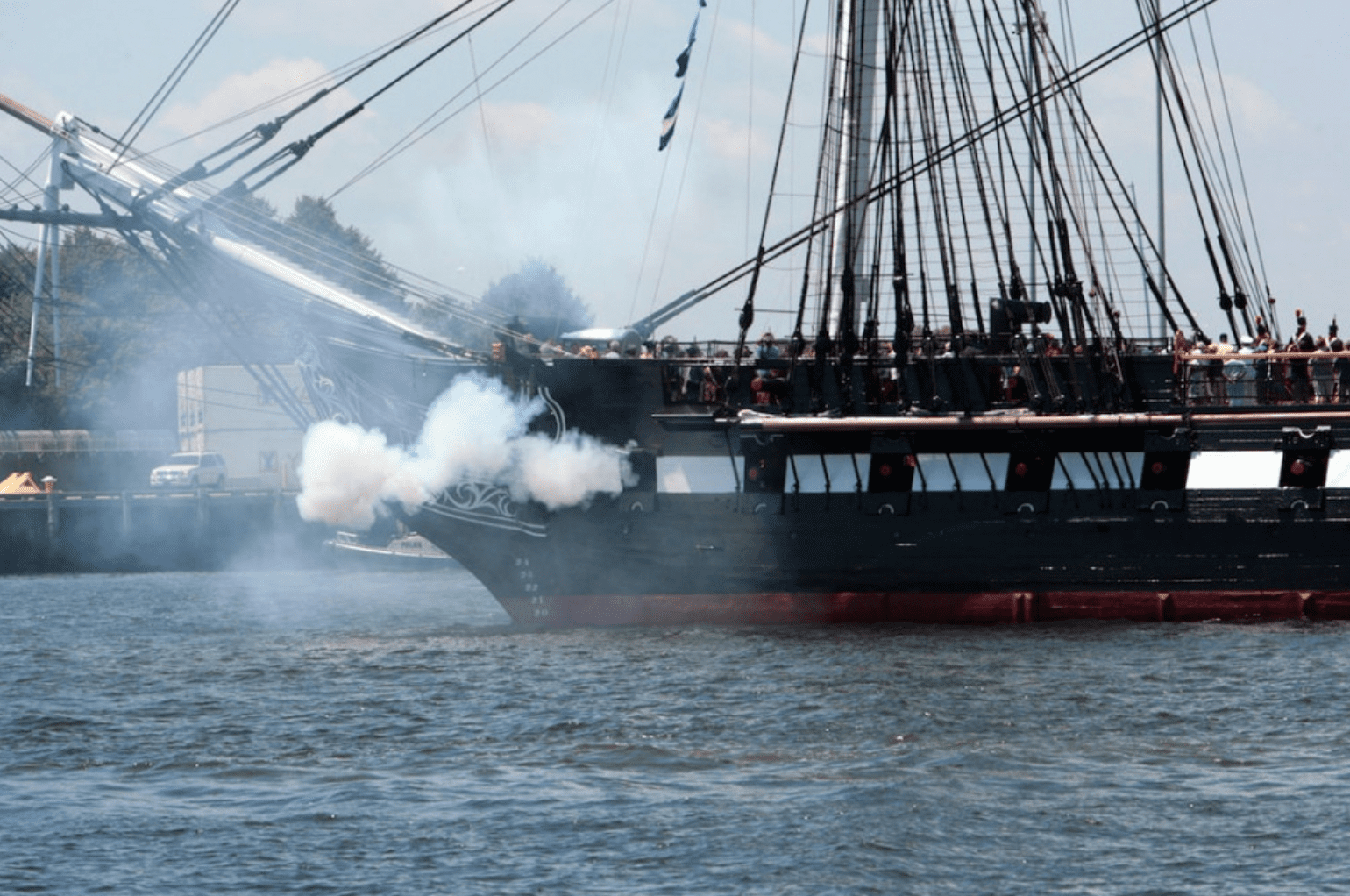“Requesting permission to make a head call” is a phrase that recruits learn to use when they join the marine boot camp. But where did this phrase originate, and why does the military call the bathroom “the head”?
The military refers to the bathroom as “the head” because old ships had their bathrooms at the front, or head. This layout made most people refer to the bathroom at the front of the ship as “the head,” which then adapted to mean all bathrooms, not just those on a ship.
Born in Spain, English is not my native language. And as a member of the Navy Reserves, when I thought I knew enough expressions for the term restroom, I learned another one – “the head.”
In this article, I’ll discuss why “the head” is a common term used in the military in reference to the bathroom. I’ll also explain its origin and why it remains relevant in modern-day military bases.
How the Term “The Head” Was Coined
The term “the head” dates as far back as 1485. The ships during this era often had a figurehead at the front of the ship, which remained common practice until the 19th century.
Most old sailing ships had bathrooms located at the head. Service members use general terms like “head” and “foot” to refer to the front and back of a ship. Thus, sailors began using the term “head” to refer to the bathrooms at the head of the ship.
Why the Bathroom Was at the Head of the Ship
The bathroom in the military gets its name “the head” primarily for its location on the ship. This location was strategic, and there are several reasons why the bathroom was at the head and not the stern.
1. The Bathroom Was Downwind
Architects structured ships in those days to allow the wind to blow from the stern (back) to the bow (front). The captain’s position was at the stern, and so were the living quarters. The bathrooms were at the bow because the wind dissipated odors away from the ship’s living and working quarters.
2. Splashing Waters Sanitized the Bathrooms
Old ships raised the stern to allow the captain to see the front. Naturally, the bow was now at a lower position, meaning the waves that splashed against the bow kept cleaning the bathrooms.
Modern military ships have since introduced indoor plumbing, but the term “the head” remains in use.
3. The Ship’s Figurehead
Until the 20th century, most ships had a figurehead at the front. All vessels from the 17th to the 20th Century had figureheads, which were primarily a sign of superstition.
- Egyptian ships had figureheads of holy birds. They believed these figureheads protected them while at sea.
- Phoenicians had horseheads, which were symbolic of swiftness.
- Greeks had carved wolves or boar heads, which symbolized ferocity.
- Viking warships had dragons to intimidate enemies. They were also a sign of the owner’s power, and some sailors even believed the dragon head protected them from bad weather and raids.
Other popular figureheads were lions and swans. The figureheads were central to the ship’s architecture because it was the first thing other ships saw while at sea. They could even identify the boat owners and quickly tell if they were encountering a friend or a foe.
Historians believe that the term “head” also refers to the location of the figurehead.
The ship’s figureheads were built from wood and mounted at the front.
As technology improved, so did the quality of ships. By the 19th Century, the ships had bigger hulls and more sails. They also carried more cannons.
Despite modern ships no longer having figureheads, the term “the head” remains in use.
Is Latrine a Military Term?
The military adopted “the head” as a general term for a bathroom. However, it’s more commonly used by the navy and marines at sea. Since they move a lot to different regions, including areas where modern bathroom facilities are unavailable, the military uses other terms for bathrooms.
The latrine is a military term for a basic bathroom, often found in military camps. However, bathroom facilities have improved over the years, so latrine only refers to basic systems, like the pit latrine or trench latrine. Modern systems are referred to as toilets or bathrooms.
Bathroom conditions have improved significantly in recent years, and the terms used to refer to the bathroom have become more fluid. Some military personnel will call bathrooms “the head,” even when referring to latrines.
In contrast, others call it a toilet, and some choose the term latrine.
The End of Figureheads on Ships
Now that the ships had weapons to fight against enemies at sea, the superstition over the protection offered by figureheads subsided. The heads remained an important part of the architecture, only now it was a beauty statement.
In the 1700s, vessel decorations became quite competitive and often exaggerated. Boat owners went out of their way to outdo the most decorated ship. So, the Royal Navy began restricting the decorations and only allowed using a lion as a figurehead.
In the 1800s, the cost of decorating and mounting figureheads became a concern. Most ships decided to take a step back and have smaller figureheads.
The popularity of figureheads diminished in the 19th Century when iron replaced wood as a building material. Today, museums have some of the most popular naval figureheads on display.
This video shows some historic warship figureheads being restored.
Modern ships have changed a lot from the 17th century. They now have proper plumbing, allowing them to place bathrooms in other parts of the ship. They also no longer use figureheads.
However, the term “the head” is so ingrained in military culture that it remains in use even today. While it isn’t as literal anymore, the phrase has become a common military term for the bathroom.
So, next time you want to be fancy in someone’s home, say, “Requesting permission to make a head call.” It may trigger a fun conversation.
Closing Thoughts
Modern ships no longer have figureheads. However, the military still refers to bathrooms as “the head.” Some of the reasons behind the alternative name still stand because most ships still have the bathroom at the front. As recruits join the military, they learn to call the bathroom “the head,” and the cycle continues. Today, navy recruits use the term out of habit.
Related Posts:



